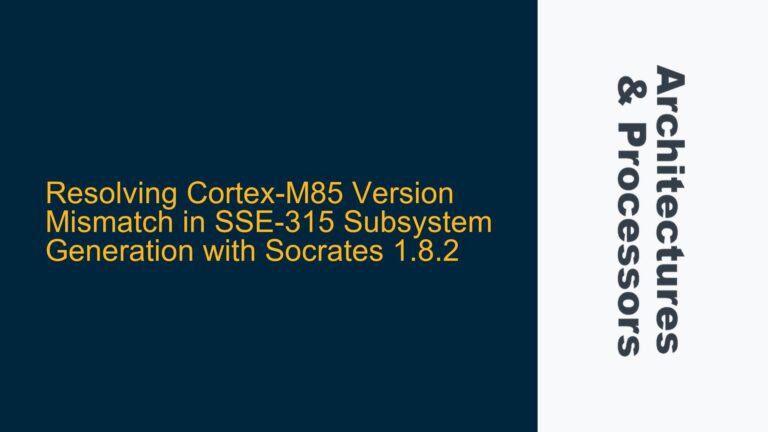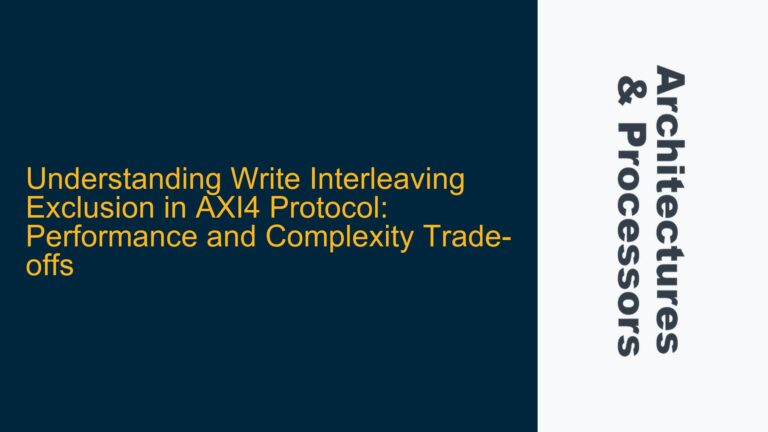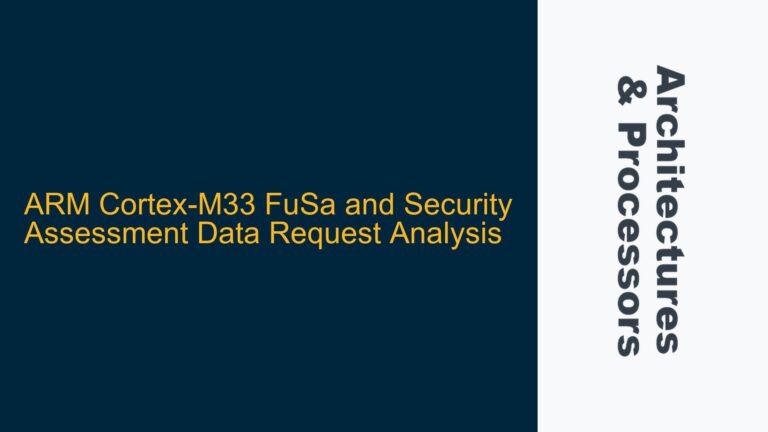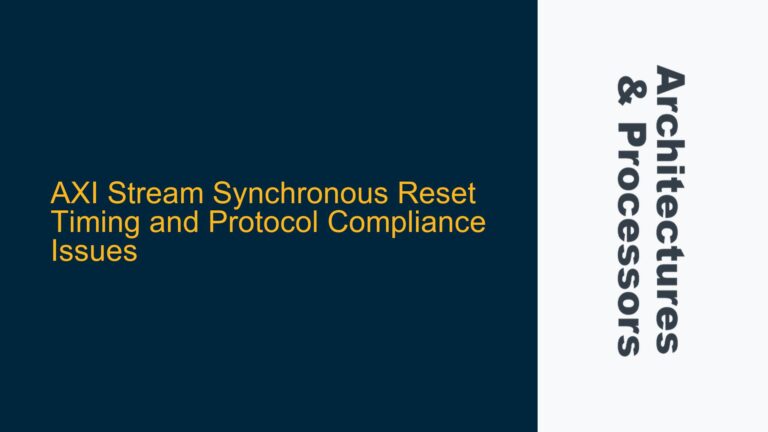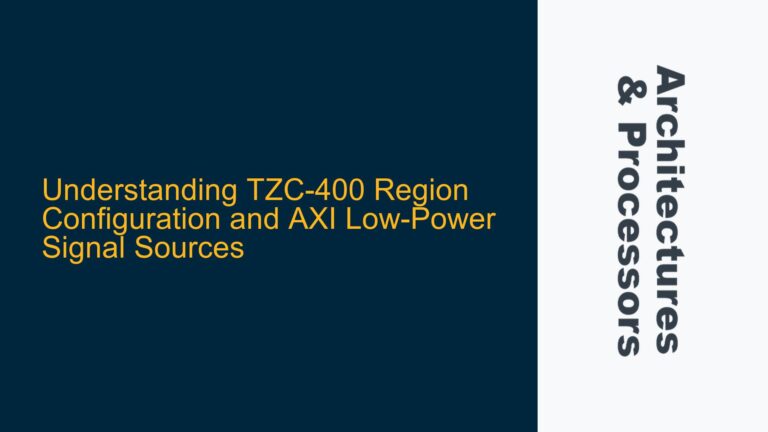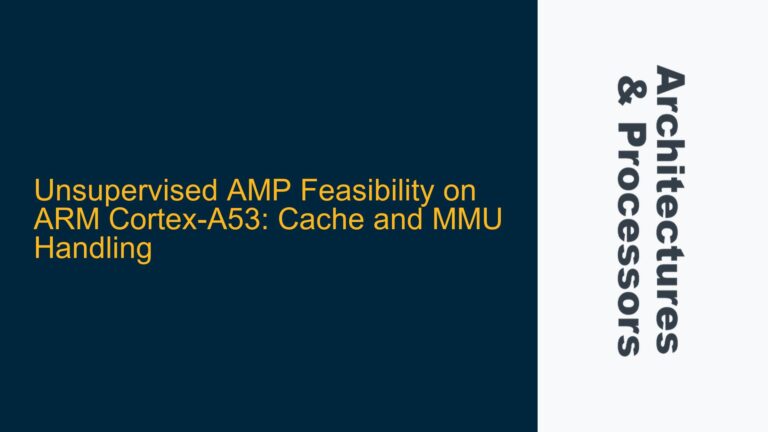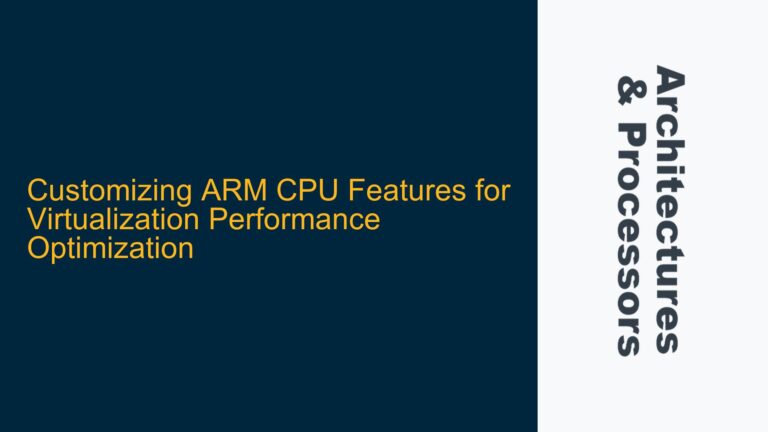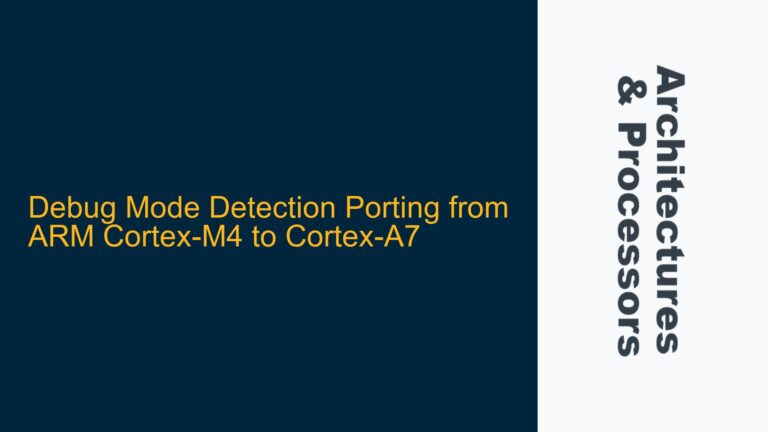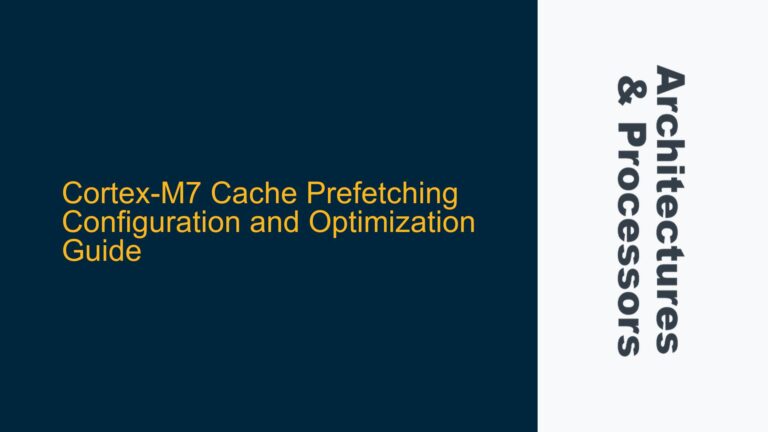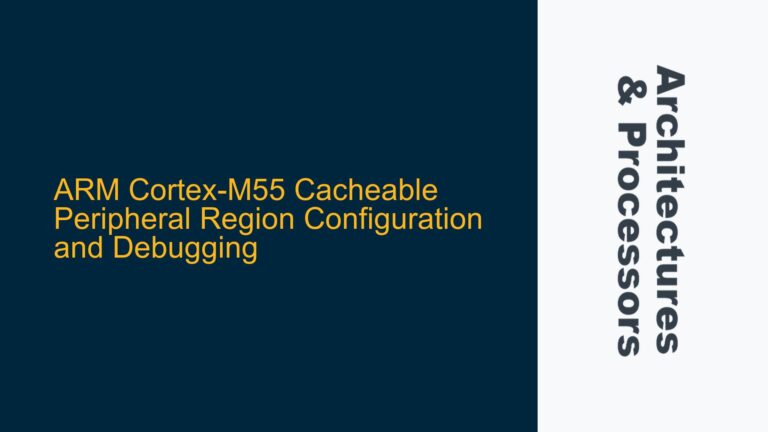Resolving Cortex-M85 Version Mismatch in SSE-315 Subsystem Generation with Socrates 1.8.2
Cortex-M85 r1p0 Incompatibility with SSE-315 Subsystem Generation The core issue revolves around the inability to generate an SSE-315 subsystem using Socrates 1.8.2 when the Cortex-M85 IP package version r1p0 is installed. The error occurs despite the successful download and installation of the Cortex-M85 r1p0 IP package. This problem is rooted in a version mismatch between…
